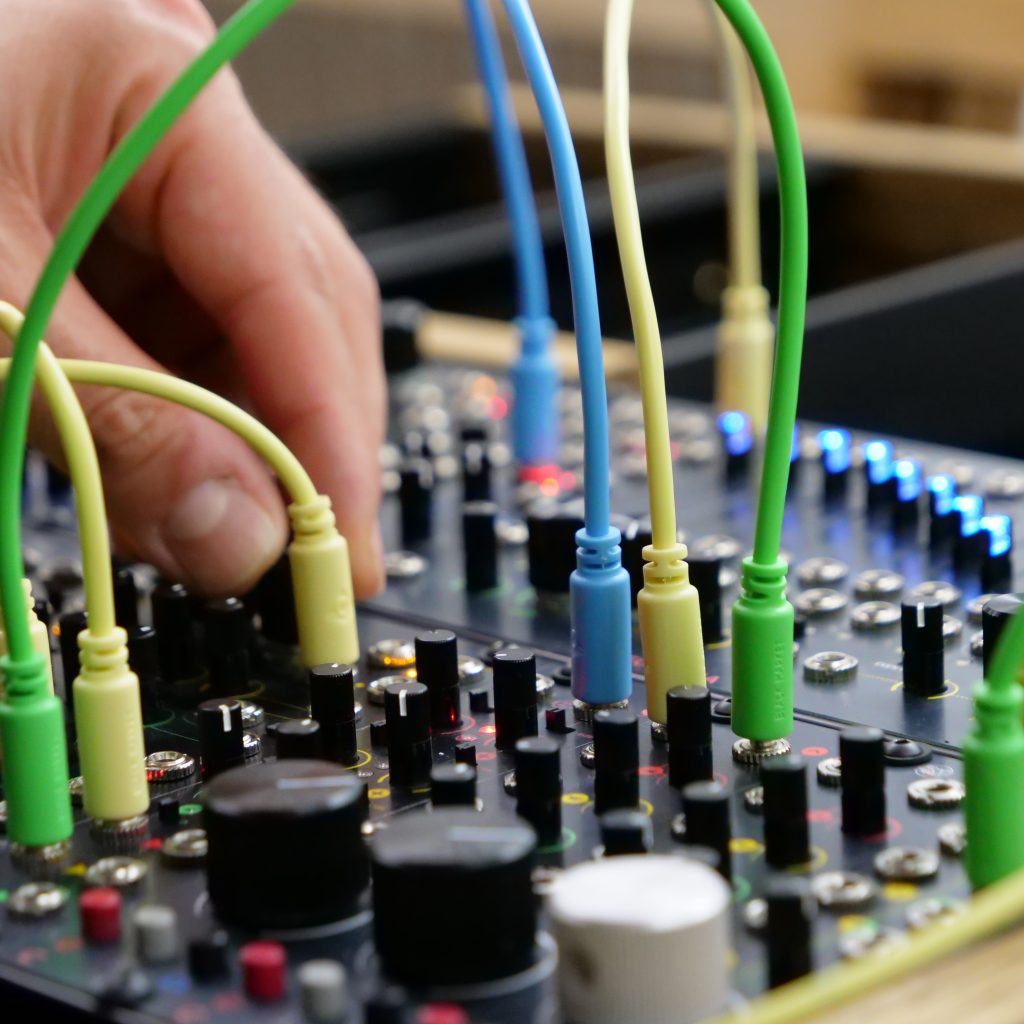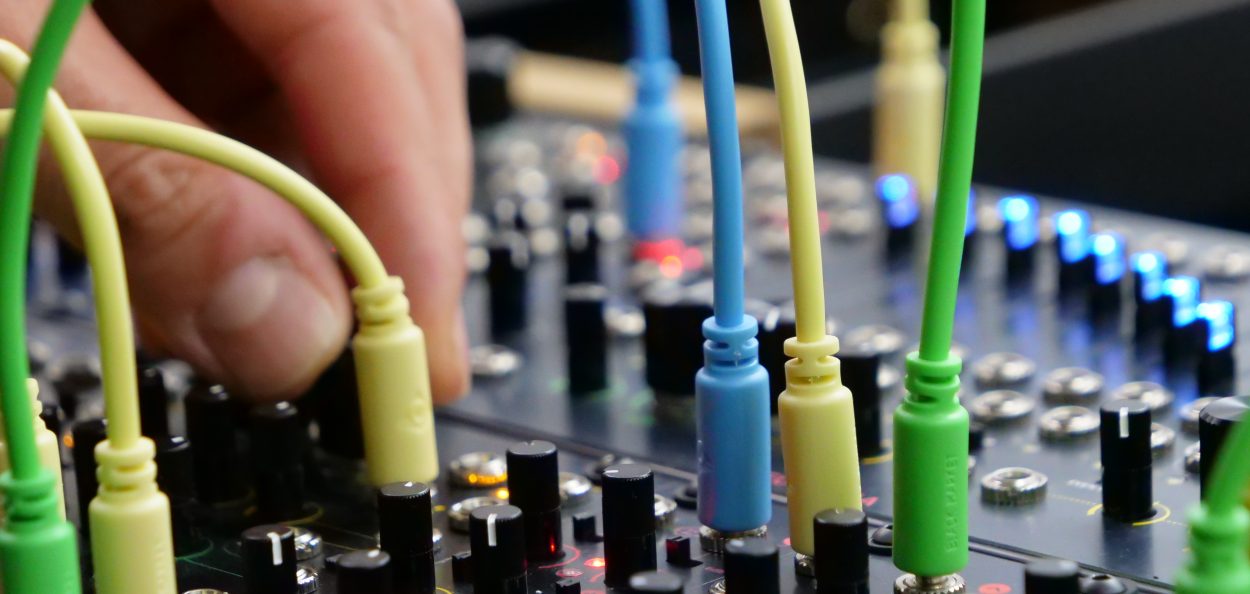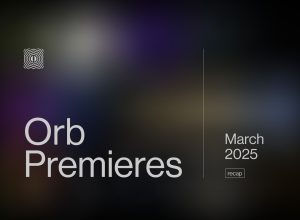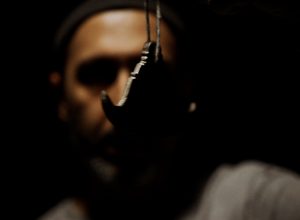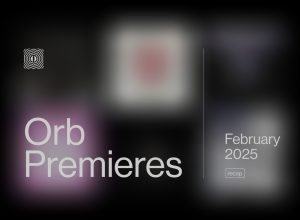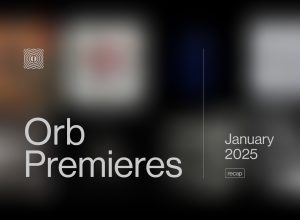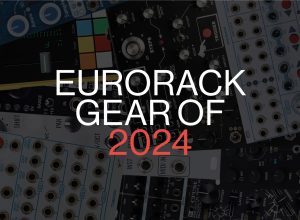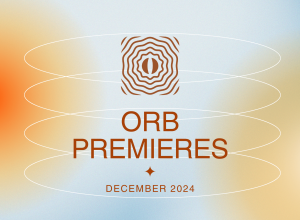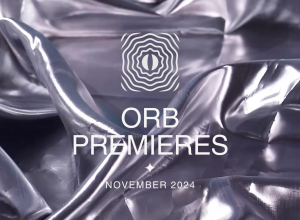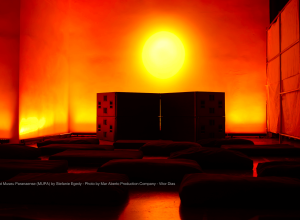Based in the Modena region in the north of Italy, Frap Tools was founded in 2015 by Simone Fabbri. Along with a series of custom cases, Frap Tools’ line of Eurorack modules are all designed and built in its home country; indeed, the etymology of its name (from the Latin “faber”, which invokes “craftsman” or “blacksmith”) is an attempt to connect its work to the long history of high-quality engineering and craftsmanship the country is known for.
Frap Tools’ modules range from the tamed random source Sapel to a spectral bank filter called Fumana, to a complex oscillator they’ve dubbed Brenso. These modules often perform multiple, complimentary functions, and find possibility in unique deviations from tradition. Take, for instance, the Falistri movement manager, a complex envelope generator and frequency divider/comparator module. Among its many small details, Falistri provides independent control over each stage of its two envelope generators, and then allows for further shaping by way of its dual cascading frequency divider, slew limiter, and ring modulator. By decoupling the “time” and “shape” parameters, the envelope can transform between linear, logarithmic and exponential curves on the fly.
Likewise, its Usta sequencer employs “variable stage duration”, meaning that the duration of every stage can be individually set in relation to the clock, allowing for complex time signatures and polyrhythms.
For many of these reasons (and via an ongoing friendship with Frap Tools’ Simone Fabbri), several of these modules eventually made their way into Caterina Barbieri’s setup. Barbieri has been using these modules for years now, and was instrumental in helping present the USTA sequencer at the 2018 Superbooth show.
We spoke with Fabbri about building instruments, collaborating with Barbieri, and his studio’s approach to user interface design.
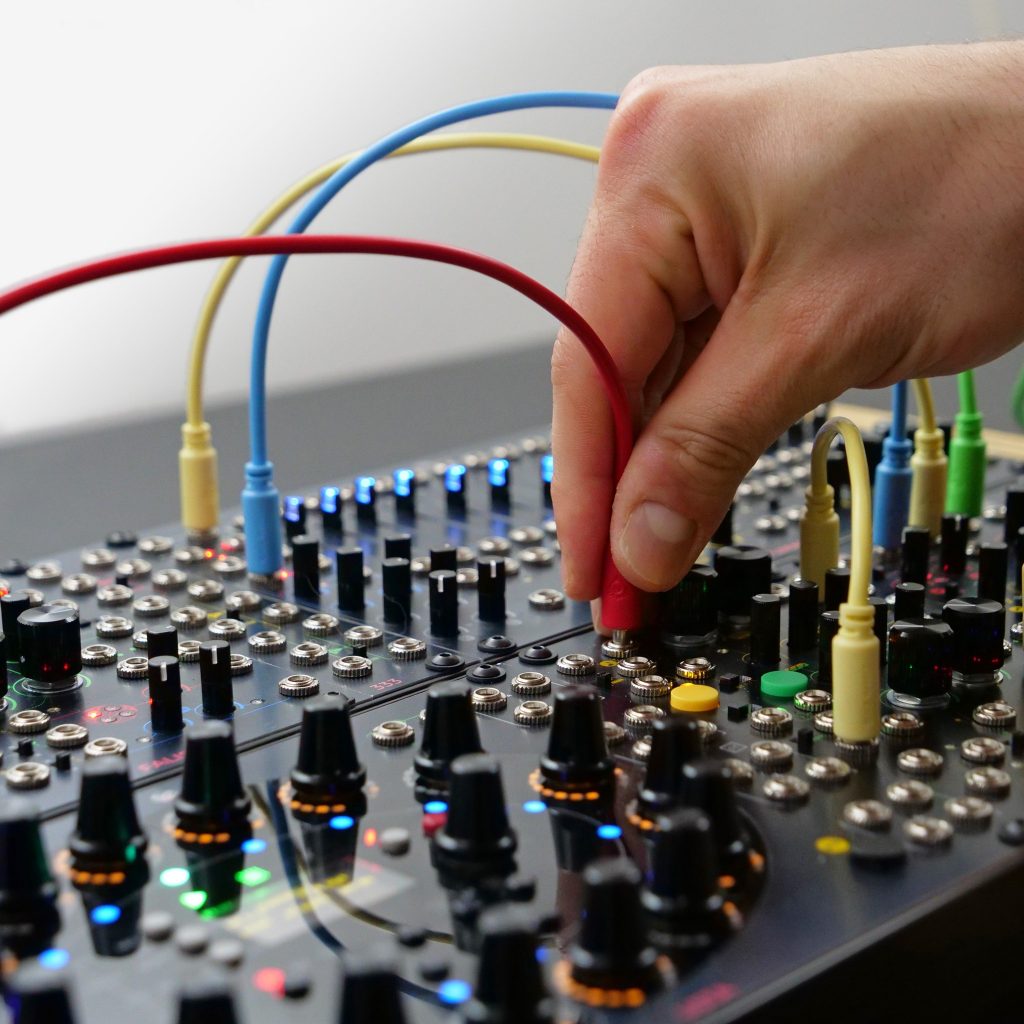
What was it that initially framed your musical point-of-view in terms of designing these modules? What are some of the guiding inspirations for the sonic character that you aim for?
The beautiful thing about designing an instrument—and especially an electronic music instrument—is that you can avoid being framed by a specific musical code, and focus solely on the sound.
In our design process, the product goes through three stages (concept, circuit, prototype) that can be repeated several times. Since we all come from different musical backgrounds (from classical to funk to breakcore), the opinions that we share during these stages come from a wide variety of musical experiences. The distillation of these thoughts becomes then the very framework for the design.
We get inspiration for “concepts”, not for sounds—and we get it from archetypes, rather than from specific modules or manufacturers. For example, Brenso was inspired by the classic idea of a complex oscillator and by the concept of linear, through-zero modulation, but we did not try to seek “the [Buchla] 259 sound.” Sometimes we don’t even have a specific “sound” to look for; the tonal features of our modules are more often the byproduct of a rigorous circuit design.
Frap Tools modules bridge the line between objective, functional building blocks, and more right-brain, creative inspiration. How do you find this happy medium between the two?
We believe that the artist’s inspiration may be, in fact, a consequence of the right set of functional blocks in their toolset, and the way these tools can be accessed.
The connection between functionality and inspiration is one-directional as, at least from an electronic musician’s standpoint, you can have functionality without inspiration, but you can’t have inspiration without at least some degree of functionality.
However, inspiration doesn’t necessarily happen with super-functional tools, but rather with the right combination of functions and limitations.
For this reason, when designing a module our focus is always on the functional blocks. We try to pick a set of functions that could create a consistent environment, and when this happens, inspiration will usually follow accordingly. For instance, it occurred that some musicians and friends reported to us some ways of using Falistri that we never considered when designing the module; in this case, the feature set triggered inspiration that went well beyond the original concept.
We like to think that a functional tool is a piece of equipment, while a tool that is functional and also inspirational is a musical instrument. And our goal is to manufacture musical instruments.
Would it be possible to pick out a specific module that had some development iteration between Frap Tools and Caterina Barbieri, and discuss what the creative workflow was like between you guys and her?
Perhaps USTA has been the module on which we had the most intense exchange of ideas.
Given how vital the sequencer is for Caterina’s creative process, we got her input from the beginning of the development stage. At that time, she was experimenting with semi-random concepts—that is, a set of arbitrary rules that could randomly generate many different sequences. She asked if it was possible to implement this kind of “arbitrary random generation” in the USTA sequencer, but we had some preconceived ideas about automatic composition devices.
We had a stimulating discussion about these kinds of compositional techniques that made us reconsider some of our initial thoughts, and Caterina’s idea of defining a set of “rules” to create random patterns from scratch led us to develop the Store Pattern function. With this feature (which we called ‘Barbieri mode’ while in development), you can store the last played pattern or the last 16 stages in the DAC buffer to a new pattern, so that you can write your “original pattern” and add some rules for USTA to modify it, and then save the “best takes.”
The degree of randomness may come from the internal “variation” controls, or an external CV, while the compositional constraint comes from the quantization rules and the rhythmic pattern defined by the “length” parameter.
This kind of collaboration is the best resource that we can have when designing a new module. Even if we had different opinions, the point of the discussion was never to decide who’s “right” or even to find a compromise, but rather to overcome a stalling situation. Eventually, the process led to an evolution of the design, which is what matters the most.
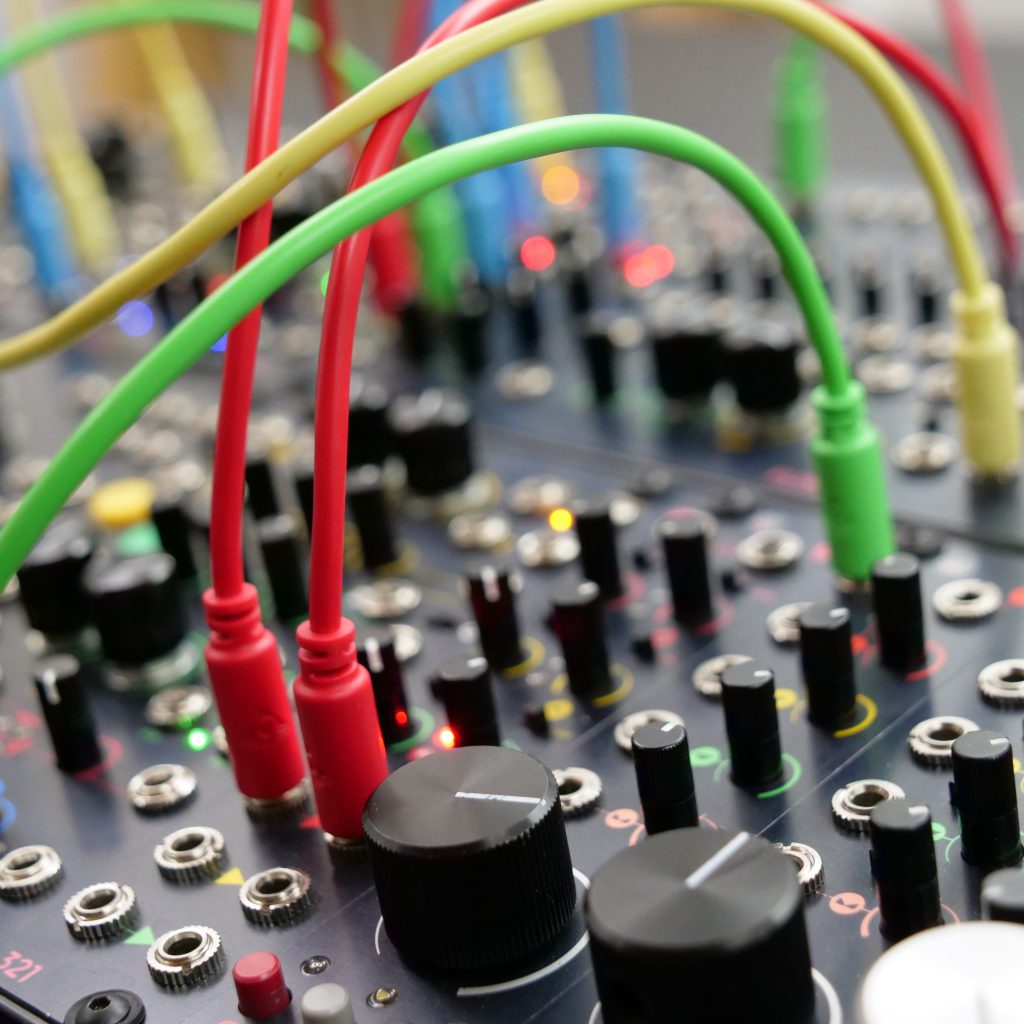
Your modules often look quite “packed” with functionality, but quite quickly become clear and easy to use. Do you have any “organizational” best practices when it comes to UI/UX design?
Every musical instrument has some “UX features” that we can perceive as an obstacle at first sight, but that, in the long run, will turn out to be a valuable help for playing. From a logic standpoint, the fact that a guitar is all tuned into perfect fourths—except for one string, that’s tuned to a major third—might seem like an odd thing. But after some practice, you begin to realize that this serves a specific purpose when it comes to chord voicings.
Every time we must consider if a feature is worth adding or not, we ask ourselves: “If this were a musical instrument, would this feature help the musician in the long run, or just get in the way?”
This “musical” approach is also what led us to develop our cryptic interfaces. We don’t want every function of our modules to be labeled, because we want to stimulate the practicing and the building of muscle memory; on the other hand, we’re committed to providing a consistent code for musicians to learn and practice.
It’s true that with this approach, someone seeing one of our modules for the first time is often unable to figure out what every knob does at a glance. It requires a steeper learning curve. Still, after the a considered study of one of our modules, it becomes easier to understand not only that module, but also the others that may come in the future, as the logic behind every interface is the same. It’s similar to those saxophone players who can figure out how to put their fingers on a flute, even if they never practiced on it.
Where do you see the future of Eurorack and, more broadly, electronic music devices going in the next 10 years or so? How do you think the pandemic might affect this trajectory, if at all?
The world is changing too fast to even attempt at making any forecast—but we have some hopes.
For Eurorack, we think that brands can’t fully determine the format’s economic development. What we can do, as manufacturers, is to focus on educating the audience and help them develop an artistic identity.
Our sector is particularly suited for this purpose, as Eurorack has room for everybody, from the punk-DIY approach to the classic, vintage-inspired systems. For a modern Eurorack designer, then, the question shouldn’t be “what can my instruments can do?” but rather, “what can musicians do with my instruments?”
Speaking of electronic music as a whole, our hope for the future is to think about it more in terms of “music” than “electronic.” Often, we see ads for “modular concerts”—which is super cool, but can also be vague. You can’t define music only based on what instruments you use for making it; if you see, for example, a “guitar concert,” would you be able to tell if it’s a Spanish folk concert or a death metal gig?
As a Eurorack manufacturer, we are of course pleased to see these kinds of modular events, and we love them, but we’d also like to see musical associations based on shared concepts, rather than the gear you use for turning them into music.
